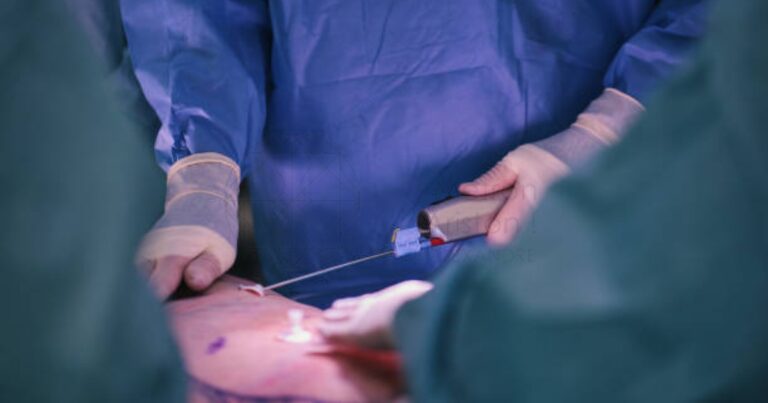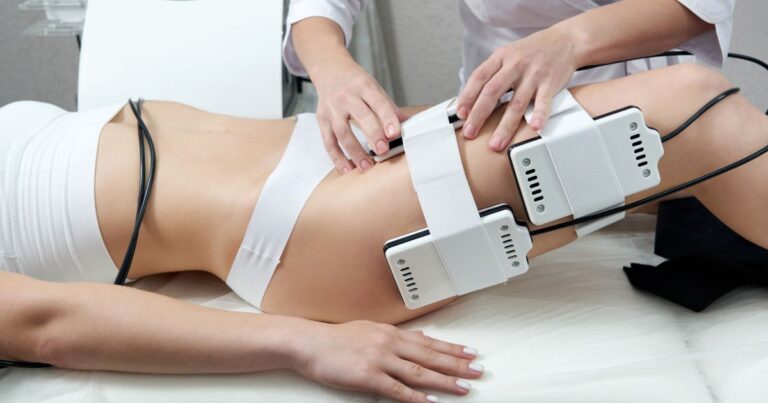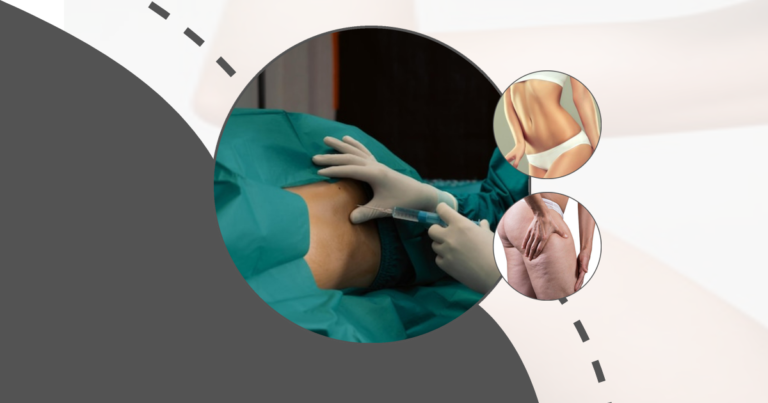Can Liposuction Make You Fatter? Understanding Post-Procedure Weight Gain
Liposuction is a popular cosmetic procedure aimed at removing excess fat from specific areas of the body. However, a common question that arises is, “Can liposuction make you fatter?” This article delves into the science behind fat removal, the potential for weight gain post-procedure, and how to maintain results long-term.
Can Liposuction Make You Fatter
The Science Behind Fat Removal and Redistribution
Liposuction works by physically removing fat cells from targeted areas. However, it does not prevent the remaining fat cells from expanding if weight is gained post-procedure. The body does not regenerate fat cells in the treated areas, but existing fat cells in untreated areas can grow larger, potentially leading to a disproportionate appearance.
- Fat Cell Removal : Liposuction permanently removes fat cells from specific areas.
- Redistribution : Remaining fat cells can expand, leading to potential weight gain in untreated areas.
Long-Term Effects of Liposuction on Body Composition
While liposuction can effectively contour the body, it does not guarantee long-term weight loss. Maintaining a stable weight through diet and exercise is crucial to preserving the results. If significant weight is gained after the procedure, it can alter body composition and affect the overall aesthetic outcome.
- Body Contouring : Liposuction is effective for reshaping but not for weight loss.
- Weight Maintenance : Essential for preserving liposuction results.
Does Fat Return After Liposuction
Factors Influencing Fat Regrowth
Several factors can influence fat regrowth after liposuction, including genetics, lifestyle, and hormonal changes. While the procedure removes fat cells, it does not prevent new fat from accumulating if caloric intake exceeds expenditure.
- Genetics : Plays a role in how the body stores fat.
- Lifestyle : Diet and exercise habits significantly impact fat regrowth.
- Hormonal Changes : Can affect fat distribution and storage.
Timeframe for Potential Fat Reappearance
Fat reappearance can vary from person to person. Some may notice changes within months, while others may maintain their results for years. Consistent healthy habits are key to minimizing fat regrowth.
- Individual Variation : Fat reappearance timelines differ.
- Healthy Habits : Crucial for long-term maintenance.
Weight Gain Following Liposuction Procedures
Immediate Post-Surgery Swelling vs. Actual Weight Gain
Post-surgery swelling is common and should not be confused with actual weight gain. Swelling can last for weeks or months, but it gradually subsides, revealing the final results of the procedure.
- Swelling : A normal part of the healing process.
- Weight Gain : True weight gain occurs from increased fat accumulation.
Impact of Lifestyle Changes on Liposuction Results
Adopting a healthy lifestyle post-liposuction is essential for maintaining results. Regular exercise and a balanced diet help prevent weight gain and ensure the longevity of the procedure’s benefits.
- Exercise : Supports weight maintenance and overall health.
- Balanced Diet : Prevents excessive caloric intake.
Liposuction and Fat Cell Behavior
How Liposuction Affects Remaining Fat Cells
Liposuction removes a portion of fat cells, but the remaining cells can still expand. This means that if weight is gained, the untreated areas may become more prominent.
- Fat Cell Expansion : Remaining cells can grow larger.
- Untreated Areas : May become more noticeable with weight gain.
Compensatory Fat Growth in Untreated Areas
When fat is removed from one area, the body may compensate by storing more fat in untreated areas. This can lead to an uneven appearance if weight is gained post-procedure.
- Compensatory Growth : Body may store fat in new areas.
- Uneven Appearance : Possible if weight is gained.
Maintaining Liposuction Results Long-Term
Diet and Exercise Recommendations
To maintain liposuction results, a combination of a healthy diet and regular exercise is recommended. This helps prevent weight gain and supports overall well-being.
- Healthy Diet : Focus on nutrient-rich foods.
- Regular Exercise : Incorporate both cardio and strength training.
Follow-up Treatments and Maintenance Procedures
In some cases, follow-up treatments may be necessary to maintain results. These can include non-invasive procedures or additional liposuction sessions.
- Non-Invasive Treatments : Options like CoolSculpting can help.
- Additional Sessions : May be needed for optimal results.
Understanding Liposuction Limitations
Realistic Expectations for Fat Reduction
Liposuction is not a weight-loss solution but a body contouring procedure. Patients should have realistic expectations and understand that maintaining results requires effort.
- Body Contouring : Not a substitute for weight loss.
- Effort Required : Long-term maintenance is necessary.
Combining Liposuction with Other Weight Loss Methods
For optimal results, liposuction can be combined with other weight loss methods. This includes a healthy diet, regular exercise, and potentially other medical treatments.
- Combination Approach : Enhances overall results.
- Medical Treatments : May be considered for additional support.
Risks of Weight Fluctuations Post-Liposuction
Uneven Fat Distribution
Weight fluctuations post-liposuction can lead to uneven fat distribution. This occurs when fat accumulates in untreated areas, affecting the overall body contour.
- Fat Accumulation : Can occur in untreated areas.
- Body Contour : May become uneven with weight gain.
Skin Irregularities and Contour Deformities
Significant weight gain can lead to skin irregularities and contour deformities. This is due to the skin’s inability to adapt to rapid changes in body size.
- Skin Elasticity : Affects appearance post-weight gain.
- Contour Deformities : Possible with significant weight changes.
Alternative Fat Reduction Techniques
Non-Invasive Fat Reduction Methods
Non-invasive fat reduction methods, such as CoolSculpting and laser therapy, offer alternatives to liposuction. These procedures can help reduce fat without surgery.
- CoolSculpting : Freezes and eliminates fat cells.
- Laser Therapy : Uses heat to target fat cells.
Comparing Liposuction to Other Fat Loss Procedures
Liposuction is more invasive but offers immediate results, while non-invasive methods require multiple sessions. Each has its pros and cons, depending on individual needs. Lymphedema surgery liposuction is a special operation that removes extra fat and fluid from swollen body parts to help people with lymphedema feel more comfortable and move easier Doctors use small tubes to suck out the excess tissue during Alcohol post liposuction Drinking alcohol after liposuction can be dangerous and slow down healing It is best to avoid alcohol for at least two weeks after the surgery to help your body recover faster
Liposuction pricing UAE varies depending on the clinic and the amount of fat removed Patients can expect to pay between 15000 to 40000 AED for a Cellulite liposuction effects
Liposuction leaves faint marks on the skin where small incisions are made to remove fat These tiny scars usually fade over time and become barely noticeable Liposuction pain intensity can vary from person to person but most patients describe it as moderate discomfort rather than severe pain The level of
- Invasive vs. Non-Invasive : Different approaches to fat reduction.
- Immediate Results : Liposuction offers quicker outcomes.
Choosing the Right Candidate for Liposuction
Ideal Body Mass Index for Liposuction
Candidates for liposuction should have a stable BMI and be close to their ideal weight. This ensures the best results and minimizes risks.
- Stable BMI : Important for optimal outcomes.
- Ideal Weight : Candidates should be near their target weight.
Health Considerations for Potential Patients
Potential patients should be in good health and free from conditions that could complicate surgery. A thorough medical evaluation is essential before proceeding.
- Medical Evaluation : Ensures patient safety.
- Health Conditions : Must be considered before surgery.
Recovery and Post-Liposuction Care
Immediate Aftercare Instructions
Post-liposuction care is crucial for a smooth recovery. Patients should follow their surgeon’s instructions, including wearing compression garments and avoiding strenuous activities.
- Compression Garments : Help reduce swelling.
- Activity Restrictions : Essential for proper healing.
Long-Term Lifestyle Adjustments
Long-term lifestyle adjustments are necessary to maintain liposuction results. This includes a commitment to healthy eating and regular physical activity.
- Healthy Eating : Supports weight maintenance.
- Physical Activity : Important for overall health.
In conclusion, while liposuction can effectively contour the body, maintaining the results requires a commitment to a healthy lifestyle. Understanding the procedure’s limitations and potential for weight gain is crucial for anyone considering liposuction.s).
FAQ’s
Can liposuction make you fatter in other areas?
Liposuction does not make you fatter in other areas, but it can lead to compensatory fat growth if weight is gained. The body may store fat in untreated areas, leading to a disproportionate appearance.
What happens if you gain weight after liposuction?
If weight is gained after liposuction, the remaining fat cells can expand, and new fat may accumulate in untreated areas. This can alter the results and lead to an uneven body contour.
How much weight gain is normal after liposuction?
Some weight fluctuation is normal due to post-surgery swelling, but significant weight gain should be avoided. Maintaining a stable weight is crucial for preserving the results of the procedure.
Can liposuction cause metabolic changes leading to weight gain?
Liposuction does not directly cause metabolic changes that lead to weight gain. However, lifestyle factors post-procedure play a significant role in weight management.








